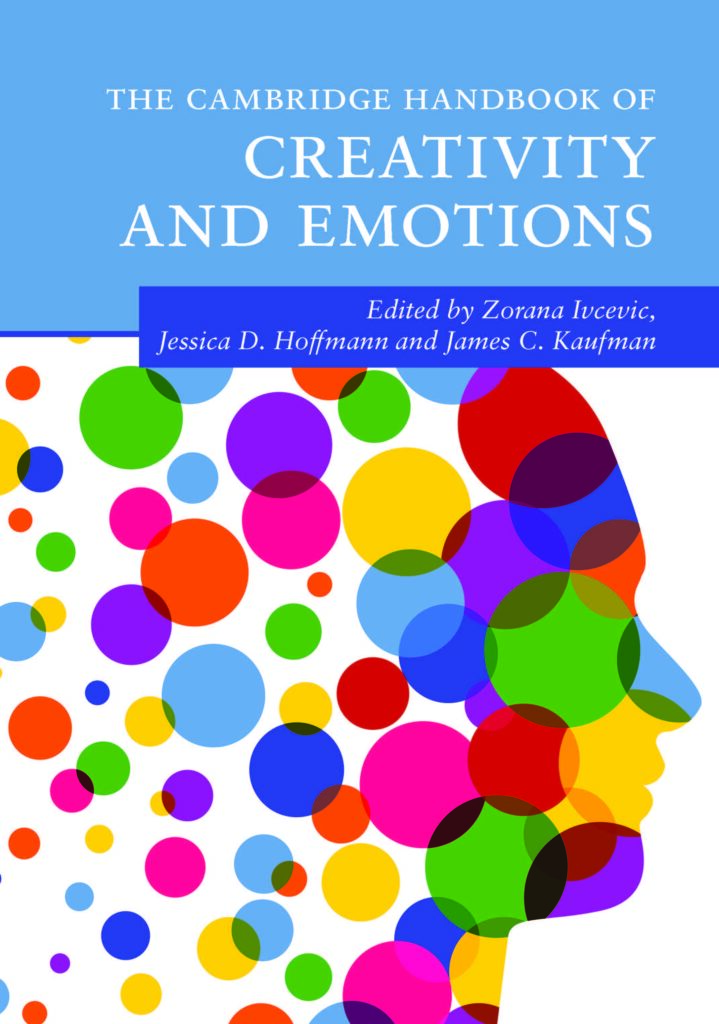
Which emotion or mood states help creative thinking? And which emotion or mood states hurt it? These were the questions addressed by the first generation of research on creativity and emotions starting in the mid-1980s.
We have learned much since. A meta-analysis of more than a quarter century of research showed reliably that positive energized states (e.g., being happy) enhance creative thinking. However, the boost that happy states bring to creative thinking is short lived and the effect is small, suggesting there is more to the role of emotions in creativity than the first generation of studies could identify.
The Handbook of Creativity and Emotion examines the role of affective processes in understanding different aspects of creativity – creative process(es), creative person, creative products and behavior, as well as creativity expressed in education and at work.
Affective states or moods influence creative thinking processes. We know more about the influence of mood states on divergent thinking than about convergent processes of idea evaluation and selection or implementation. There is reliable evidence that positive activated moods enhance creative idea generation by broadening attention. Creative divergent thinking can be boosted through open-monitoring meditation and mind wandering as emotion regulation processes.
But creative thinking is also strengthened by negative activating moods. For example, anger – emotion triggered by an experience of unfairness or injustice – can stimulate exploration of ideas. However, the source of anger can matter. At work, if people are angry about something directly related to their jobs, they might engage in dark creativity, such as action harmful to others or the organization. But if they are angry about something outside of their work (e.g., systemic injustices), they can come together and generate ideas how to address the sources of these feelings.
Although research on affective processes in implementation of creative ideas and creative action is lagging, emotion regulation is emerging as a factor in maintaining effort and persistence. Three sets of emotion regulation processes might be especially relevant: managing affect intensity (e.g., moderate level of stress), managing appraisals (to interpret emotion-eliciting events as challenges as opposed to threats), and managing resources (e.g., to buffer against the effects of stressors on creative activity).
Traditionally, the study of the creative person focused on personality traits of creators with different level of achievement and in different domains. We thus know that positive emotionality predicts self-perceived creativity and that artists tend to be more emotionally sensitive than non-artists. Other personal attributes relate to both affective processes and creativity. For example, there are gender differences in both affective experiences in everyday life and in specific creativity-relevant contexts like work, as well as gender differences in experienced support for creativity, creative behavior, and achievement. Women have less support for creativity, which in turn predicts their creative behavior at work.
Although creativity is most often studied as an outcome and we examine how emotions predict creative behavior and achievement, creativity also has emotional consequences. Art as a prototypical example of creativity evokes feelings, from basic emotions like joy or sadness, to epistemic emotions of curiosity, wonder and awe, to moral emotions such as disgust. Emerging research points to a significant correspondence between emotions of viewers and emotions artists aimed to communicate. Other types of creative products are defined by their emotion-related features and effects. For instance, dark creativity has an intent to do harm and/or inflicts actual harm (with related emotional consequences).
A growing area of research explores how engagement in creative activities can build well-being. This is perhaps most evident in the case of creative arts therapies and their effects on reducing emotional suffering and distress. But participation in everyday creative activities can also repair everyday moods, build skills like empathy, emotion understanding, and emotion regulation, and contribute to psychological well-being (e.g., purpose and meaning in life).
The final section of the Handbook takes the research from the laboratories to the real-life contexts of school and work. Key in both contexts is climate supportive of creativity. Classroom climate supporting creativity can enable students to approach curricular experiences in which they encounter uncertainty with creative self-efficacy and successfully manage emotions, ultimately leading to creative expression and development. In the workplace, affective climate is relevant to broaden-and-build thinking processes and to processes of social integration, which both have consequences for creative outcomes. One specific aspect of affective climate that emerges as crucial in supporting creativity at work is psychological safety; it creates an environment in which ideas can be shared, discussed, and built without fear of negative social consequences. Importantly, emotions influence creativity on multiple levels, from changes in affect through time within an individual, to emotion-related differences between individuals, to emotions in interpersonal relationships, team or group emotions, and finally the level of work culture and climate.
As the Handbook reviews the last four decades of research, it also looks ahead to questions yet to be answered. The questions we ask should be less about what emotions influence creativity and more about how different emotions influence creativity, as well as how emotion abilities – the way we reason about emotions and solve emotion-related problems – influence the full span on the creative process, from facing uncertainty and potential creative anxiety to coping with frustrations or task-related and interpersonal conflicts in developing ideas into products and performances.

Title: The Cambridge Handbook of Creativity and Emotions
ISBN: 9781009013086
Latest Comments
Have your say!